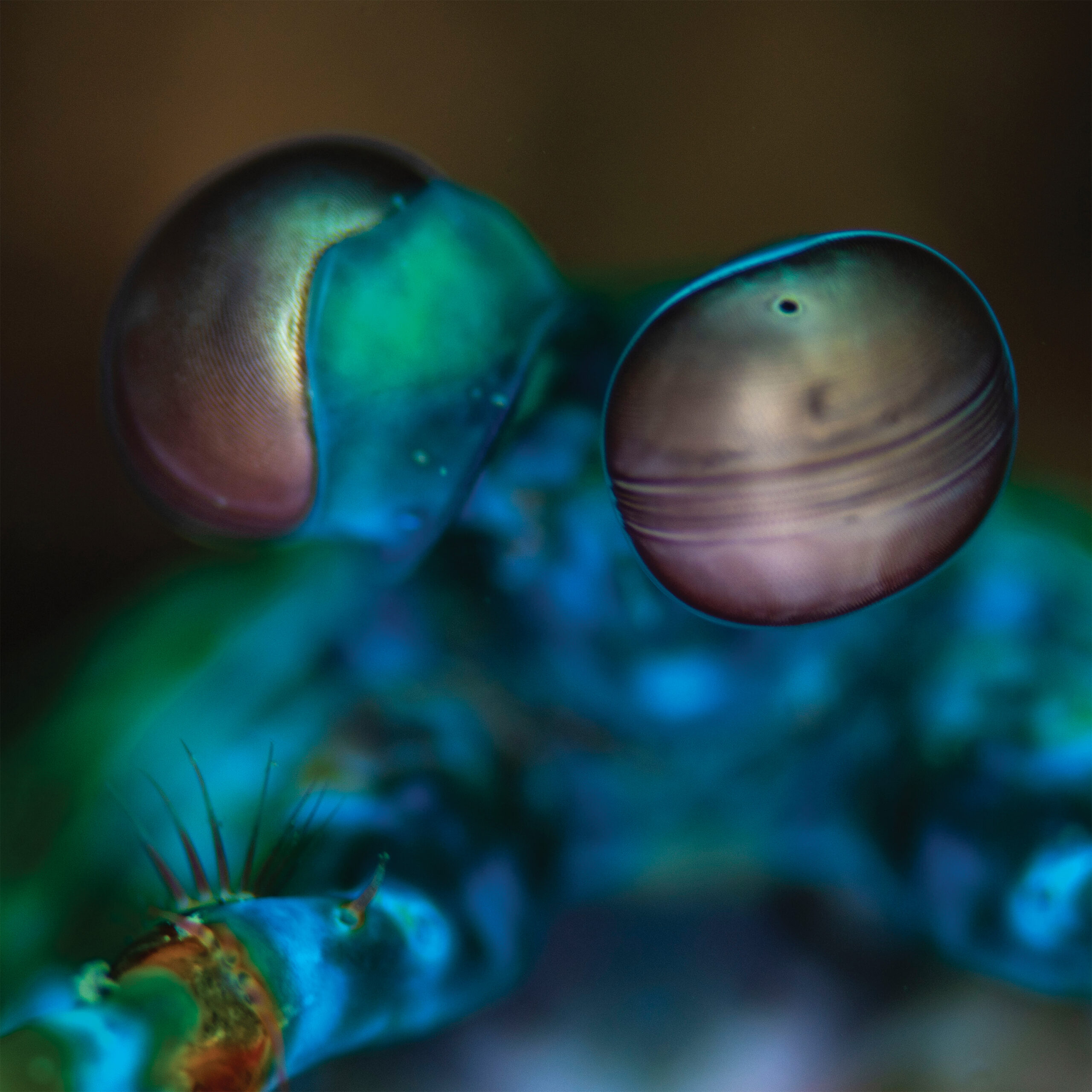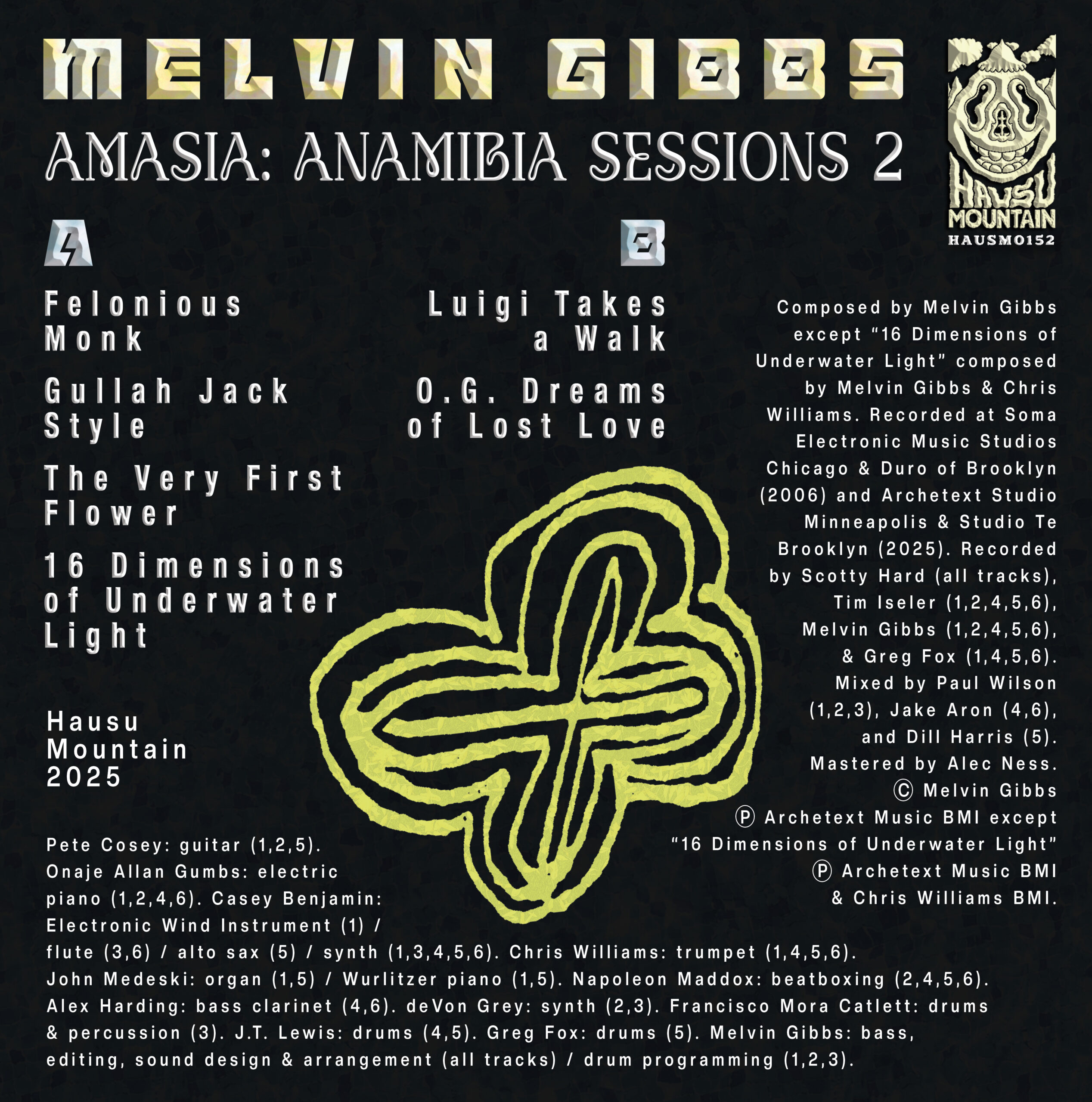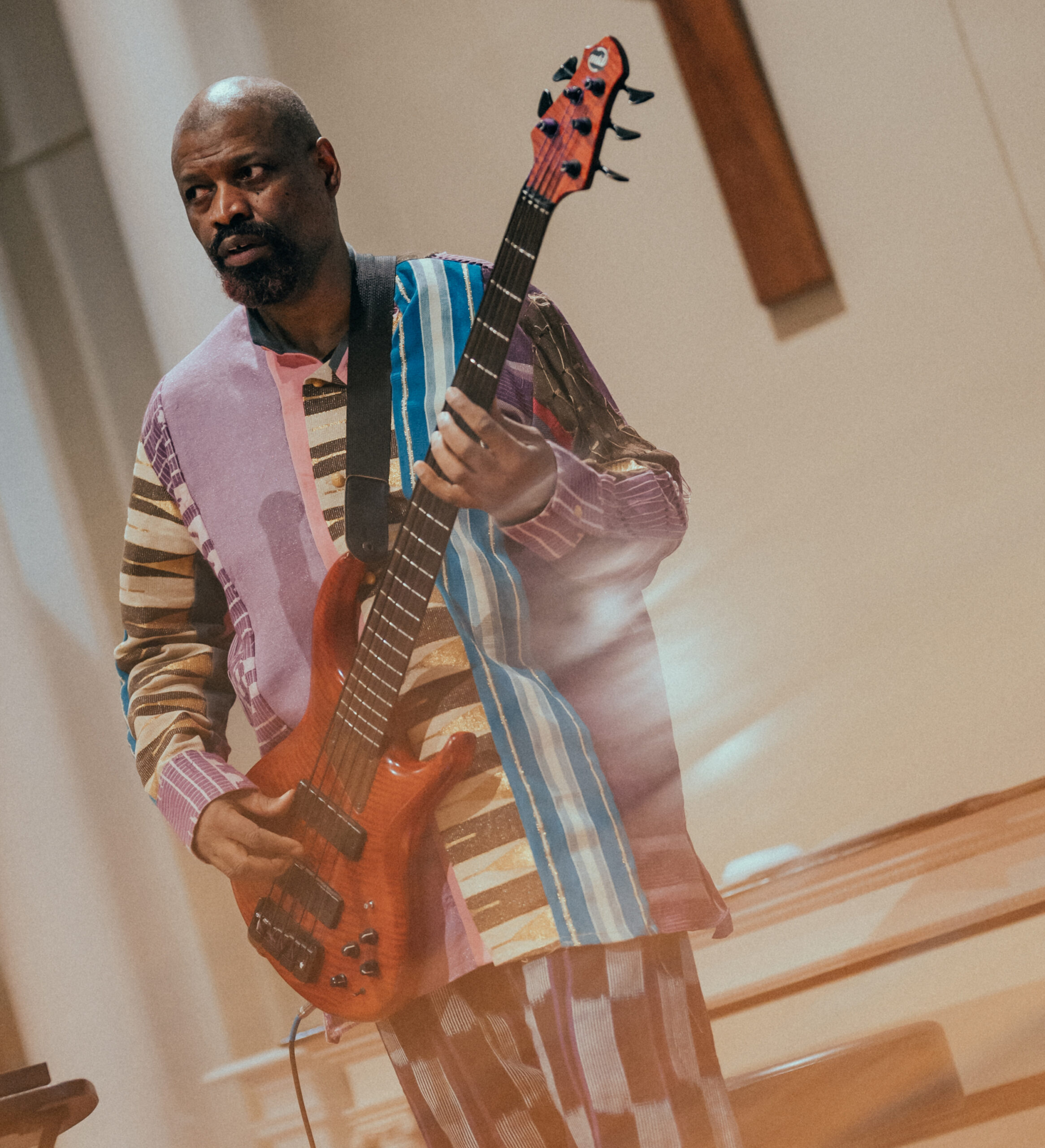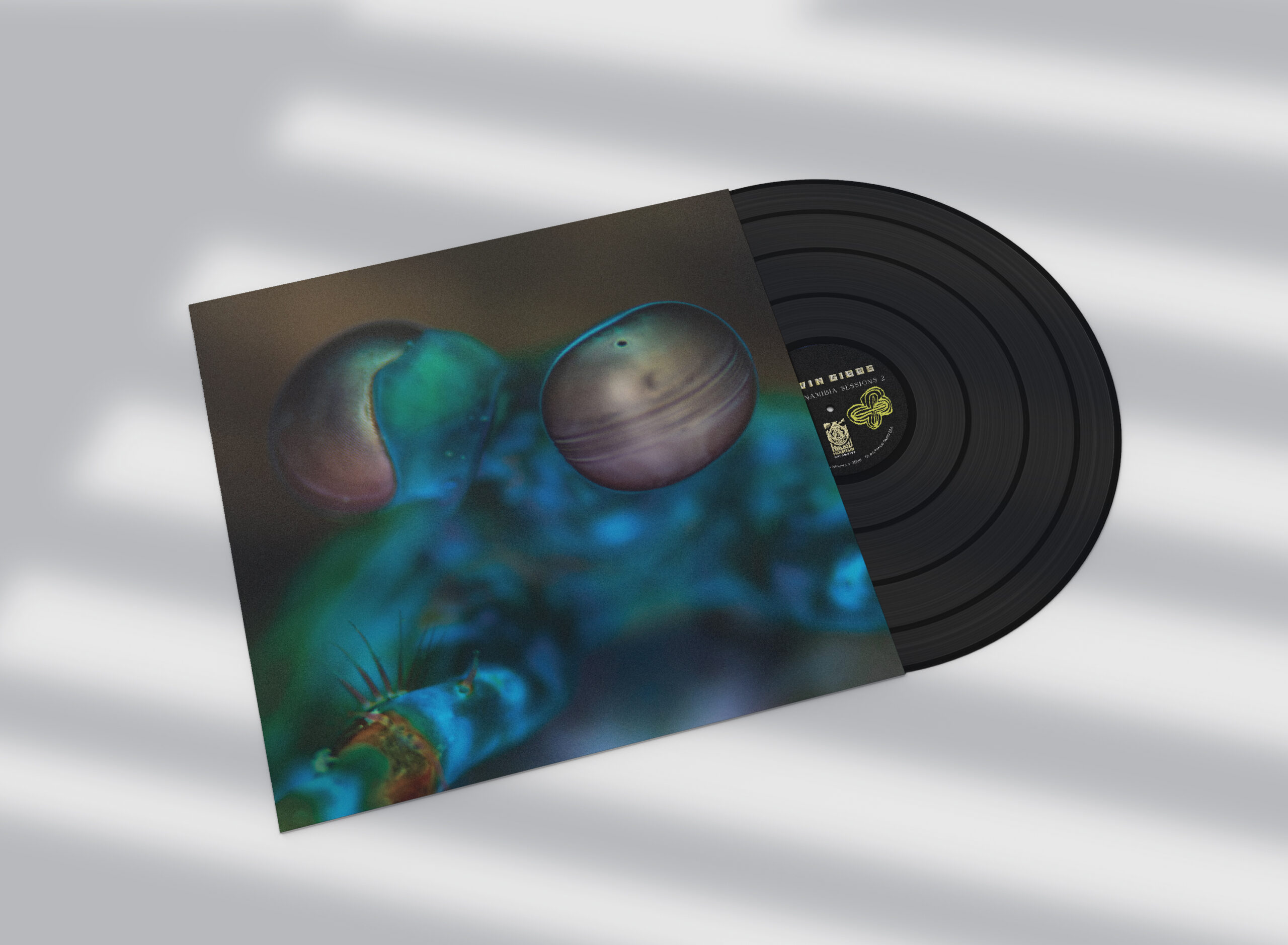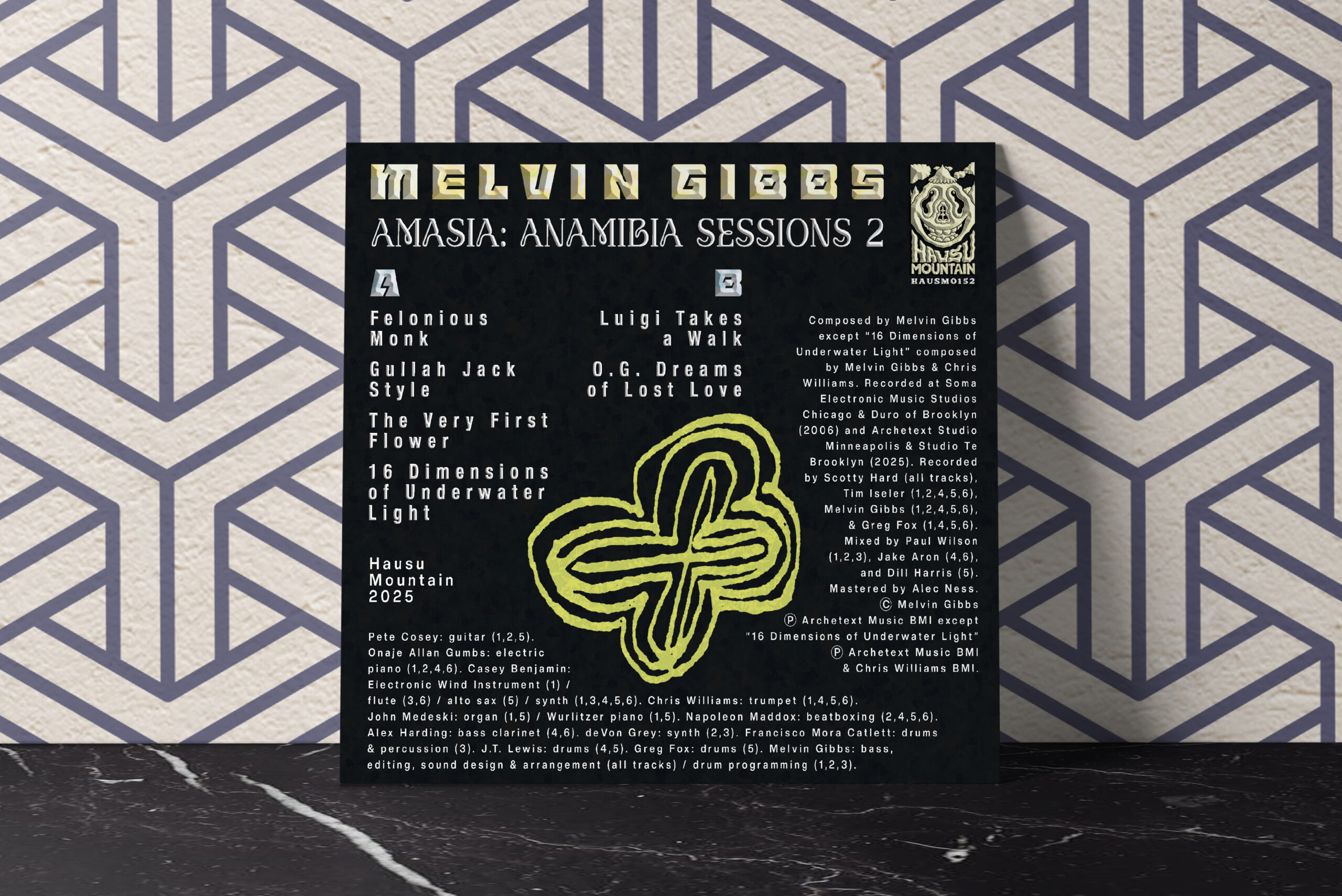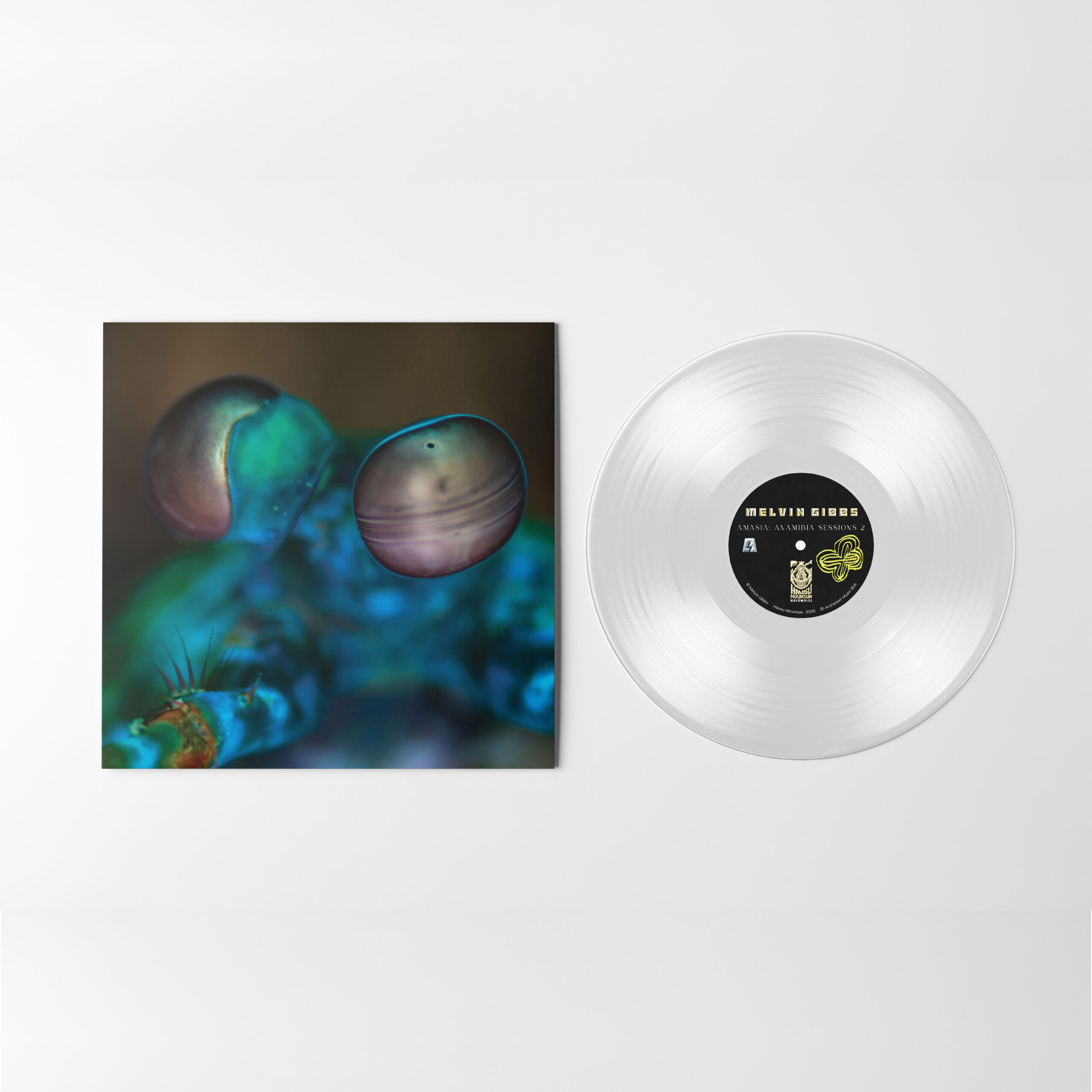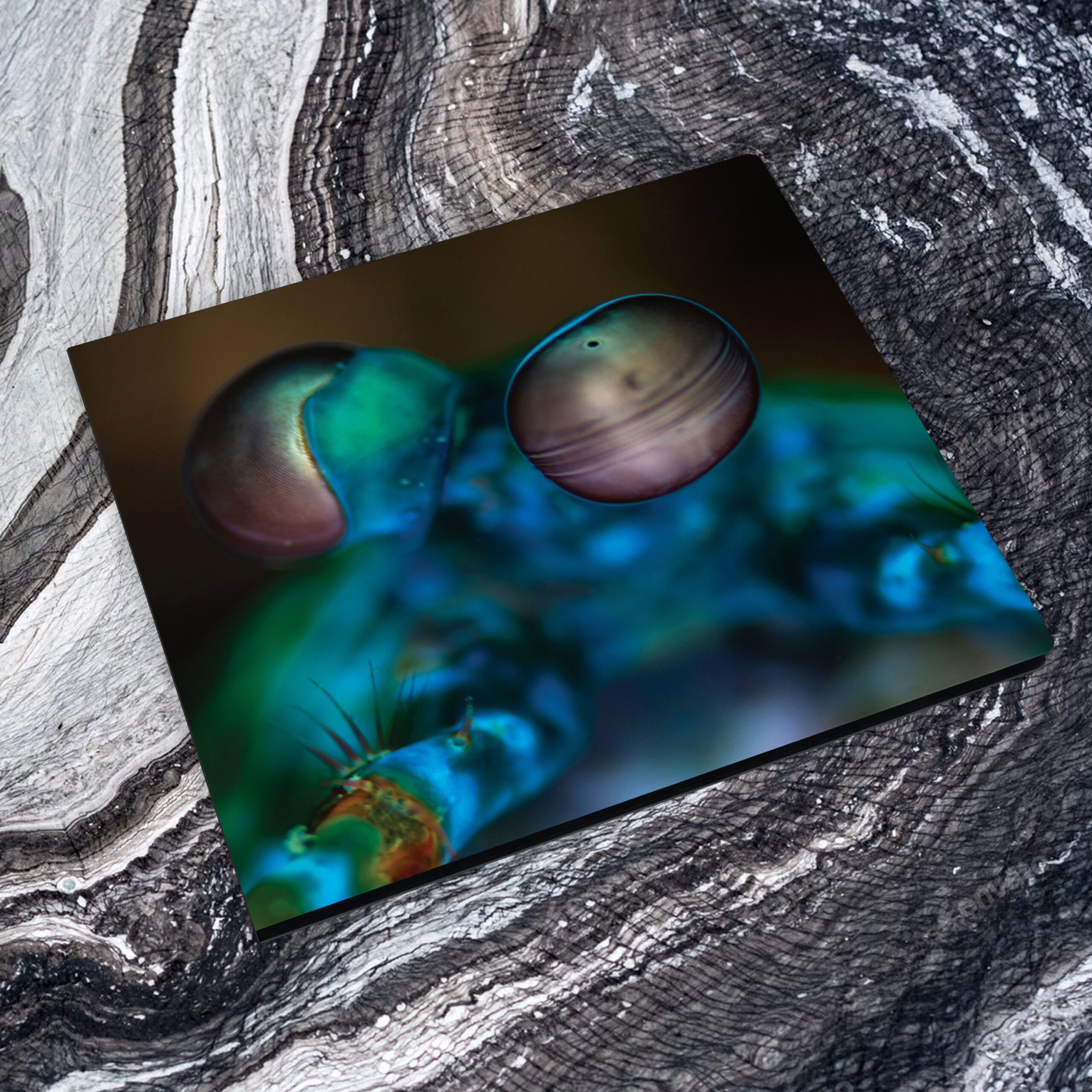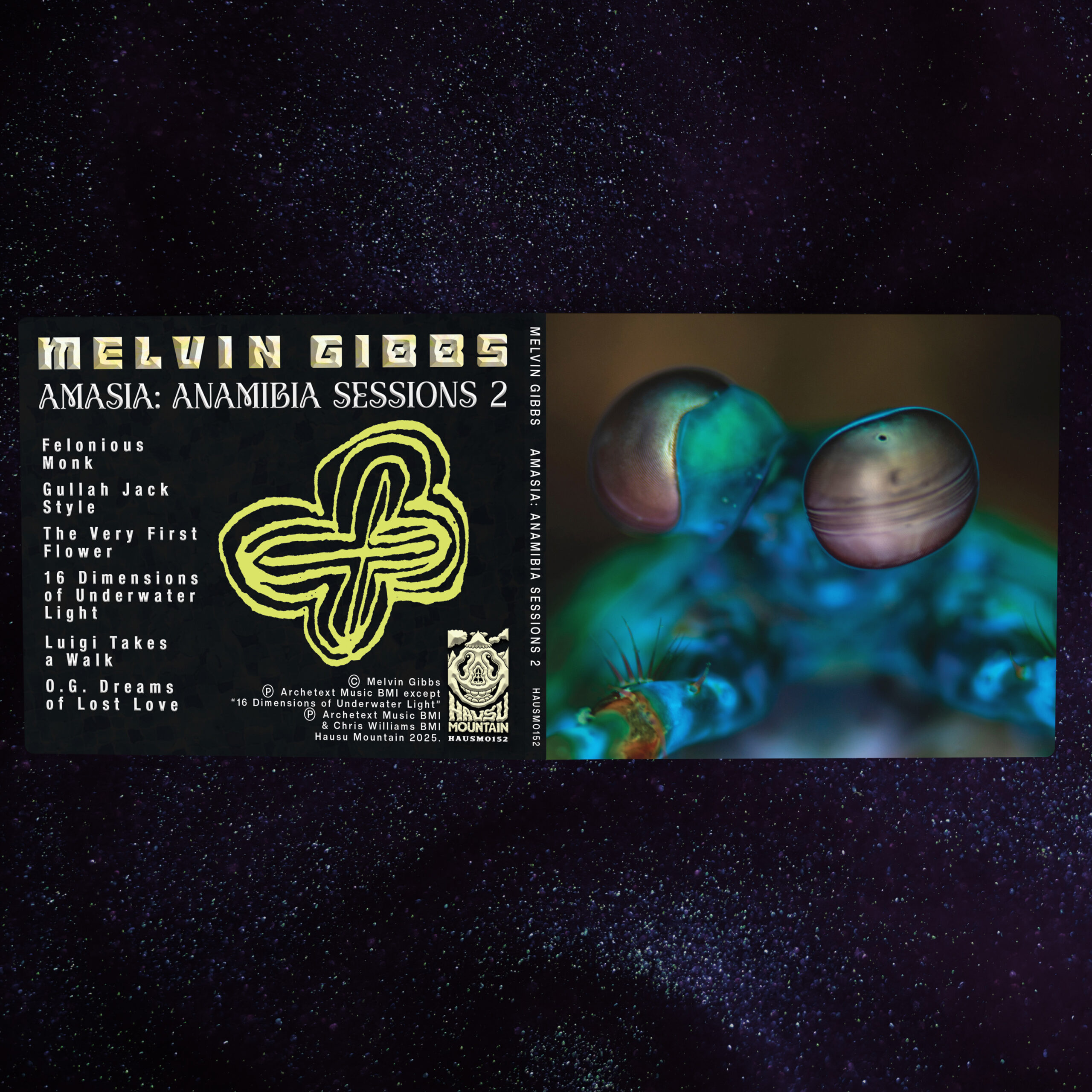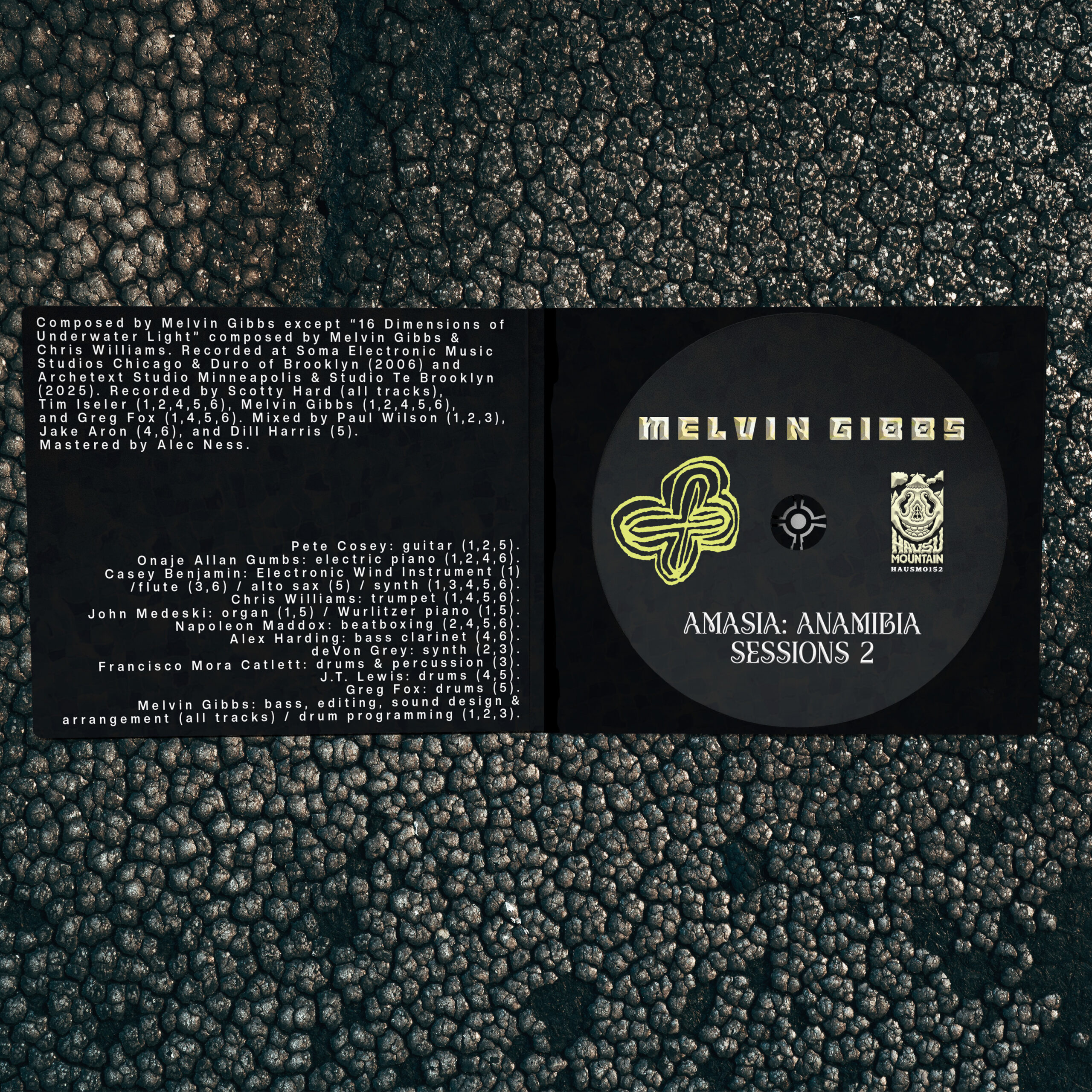To be released on LP on both crystal clear vinyl and black vinyl, and CD on October 14th, 2025. Design by HausMo Max. CD packaged in 4-panel gatefold digipak. This is the catalog page with album information and artwork. To purchase, head to our Bandcamp page.
–
–
Grammy-nominated composer / producer / bassist Melvin Gibbs has a beyond-diverse background in jazz, rock, punk, and freeform experimentalism — anchored by mentors including Ornette Coleman and Gil Evans, encompassing work with Arto Lindsay, dead prez, and Sonny Sharrock, stints in Defunkt and the Rollins Band, and collaborations in ensembles including Power Tools alongside Bill Frisell and Ronald Shannon Jackson and the cooperative Harriet Tubman. Within the last few years, Gibbs released solo works on Editions Mego and Northern Spy, and performed in collaboration with Marshall Allen, Elliot Sharp, Don McKenzie (as Bootstrappers), Wadada Leo Smith, and with theoretical physicist Dr. Stephon Alexander (as God Particle). He recently finished his first book, titled How Black Music Took Over The World, which will be published by Basic Books next year. Gibbs plays bass in the band Body Meπa, whose two albums to date – 2021’s The Work Is Slow (HAUSMO120) and 2024’s Prayer in Dub (HAUSMO145) – were released by Hausu Mountain.
Hausu Mountain proudly presents Melvin Gibbs’s Amasia: Anamibia Sessions 2. The avant-jazz odyssey finds him operating in the many-tendriled roles of composer, arranger, collagist, performer, and bandleader — all while merging together recordings that span two decades, featuring an interdisciplinary array of collaborators, into a composite whose overflowing amalgam of ideas transcend genre and categorization. Following in the Anamibia series of releases which began with Anamibia Sessions 1: The Wave (issued on legendary label Editions Mego in 2022 as one of the final releases selected by founder Peter Rehberg before his passing), Amasia shifts the focus from Gibbs’s purely solo electronic experiments towards the realm of large ensemble assemblage, recontexualizing performances recorded as early as 2006 within the wide scope of his contemporary production and the in-the-studio contributions from collaborators in 2024-2025. The thrilling results find, to give one example, the inimitable guitarist Pete Cosey – former Miles Davis / Muddy Waters / Herbie Hancock associate – who recorded his parts in 2006 ripping his signature distorted leads alongside the organ and Wurlitzer of experimental jazz keyboard pillar John Medeski (also recorded in ’06) over a drum performance by omnivorous luminary Greg Fox (recorded in 2025) – Gibbs’s current bandmate in Body Meπa. As that example shows, Gibbs’s temporally transplanted and recombined sessions defy the boundaries of space and time that normally apply to musical composition. But his production and editing — in addition to his drum programming, which takes cues from everything from present-day hip hop production to the more frenetic strains of contemporary electronic dance music — coheres the work into an electrifying mosaic of voices that testifies to his horizon-seeking vision as a modern composer.
In his role as the spearhead of the many branching sonic facets of Amasia: Anamibia Sessions 2, Melvin Gibbs drew inspiration from Teo Macero and Miles Davis’s boundary-shattering production / editing on landmark albums including Bitches Brew, On The Corner, and Get Up With It — with the album Agharta serving as the primary inspiration and North Star for the album’s creation. Gibbs began meticulously compiling and piecing together Amasia to coincide with the fiftieth anniversary of Agharta in 2025, an album whose expansive atmospheres and genre-agnostic experiments inform his work to this day.
Gibbs goes into detail about his compositional mindset and the many threads of history that went into Amasia’s creation. In his own words:
Amasia is subtitled Anamibia Sessions 2 because, like my album Anamibia Sessions 1: The Wave, the initial spark came from my buddy, the great artist and great mind, Arthur Jafa. Arthur’s prompt was simple: have a group of musicians play along to Miles Davis’ Bitches Brew album, then make a record from the results.
Amasia isn’t just a manifestation of my view of what an intergenerational embrace of the concept of Great Black Music should sound like. The work bridges the gap between alive and unalive in a Voodoo/Hoodoo kind of way that you could look at as recentering the ancestral Afrocentric view of transhumanism in this moment where we’re grappling with AI and the Silicon Valley / tech bro iteration of transhumanism.
The original sessions that are the basis for this album happened back in 2006. Those sessions included three great musicians who are no longer with us: guitarist Pete Cosey, keyboard player Onaje Allan Gumbs, and multi-instrumentalist Casey Benjamin. The three of them are gone, but their vibration contributes an energy to this album that goes beyond representing some essence or signifying some emotion from the past, or simply invoking a bygone musical era. On this record, their performances get inserted into the current musical zeitgeist, and what they’ve done maintains its dialogue with Black cultural evolution.
In 2006 my Harriet Tubman bandmate drummer J.T. Lewis and I were also playing in Pete Cosey’s “Children Of Agharta,” a band Pete put together to celebrate the era of Miles’ music that he was a part of which also included, at various times, saxophonists Gary Bartz, John Stubblefield, and Dave Leibman, as well as Johnny Juice, the DJ of rap group Public Enemy, on percussion.
So, when I decided to make a record using Miles’ music as the prompt, he was the first person I reached out to. J.T. and I flew out to Chicago, and the two of us recorded with Pete there. I remember Pete saying that it felt good to play with “the Chief,” which is what band members called Miles, again at the session. I should note that Pete didn’t know much about Bitches Brew beforehand. He told me, “I didn’t listen to it. I was listening to Black music.” That statement seems dismissive until you remember that Miles put together the band Pete was a part of specifically to play Black music. After J.T. and I recorded with Pete in Chicago, I returned to New York and continued the project, working with keyboardist John Medeski, bass clarinetist Alex Harding, percussionist Francisco Mora Catlett, and vocalist/beatboxer Napoleon Maddox as well as Casey and Onaje. The intergenerational aspect of the project was strong even then because Onaje was sort of a mentor to me, and Casey was a mentee.
That was the era when the music business had fallen apart. I ended up sitting on the sessions until 2010, when I discovered Bandcamp. I decided to mix three excerpts from the sessions and release them pretty much as-is as part of a series of ten weekly downloads hosted on the website that I called “Phree-dem Downloads.” 2010 was also the 40th anniversary of the release of Bitches Brew. It so happened that I got drafted to be part of one of the two major tribute projects dedicated to the album that were making the rounds of jazz festivals that year. I wanted these recordings to get the attention I feel they deserve, so I held off on finishing and releasing a record containing them at that time.
When I learned that the year 2025 is the 50th anniversary of the original release of Miles Davis’ Agharta album, I decided that now was the time to pull the sessions up and finish them. Pete’s work is an integral part of that album, so I figured that this would be a good year to honor him, as well as honor what the sound of that era of Miles’s music represents to me. I purposely did not include a trumpet player on the original sessions in 2006, but when I heard Chris Williams, I decided he was the right person with the right sound to help me finish the record, so I added him on. I also added drummer Greg Fox to give the record muscle and brought in keyboard player deVon Grey to add some final touches.
The first time I heard Miles’s album On The Corner, I didn’t get it. I didn’t understand why he’d put out an album that had a bunch of songs with the same groove but different titles. It wasn’t until after I heard King Tubby’s Meets Rockers Uptown, got into dub music and “versions,” and grasped the idea that you can do multiple things with the same piece of recorded music that I understood and enjoyed what Miles and his producer Teo Macero were doing on that album. So I’ve always heard Miles’s ‘70s music as a form of dub music and related his ‘70s output to remix culture as much as I relate it to jazz. With that in mind, I wanted this project to highlight the producer / remixer aspect of my work.
I embraced the idea of world-building music while making Amasia. Agharta is alleged to be an occult kingdom in the middle of the Earth. In the late 70s, the Ansaru Allah community led by Dwight York, then known as Dr. York, were well known to Black Brooklynites. They published many tracts, including one titled “Shamballah and Aghaarta.” My perspective on that alleged kingdom is colored by their perspective. Pangaea, the companion album to Agharta that was recorded at the same concert that produced Agharta, is named after the supercontinent that preceded the configuration of continents that we live on now.
Amasia, in contrast, is one proposed configuration for the supercontinent that will follow the configuration we’re living on now. Making this record, I imagined Amasia as a companion world to Drexciya. In The Wretched Of The Earth, Franz Fanon, posits that music that, like the blues, was born during the experience of Black oppression will disappear because, in his words, “n-words are disappearing”. I posit that on Amasia, “n-words” will in fact have disappeared. But there will be reverence for those generations of Black people who persevered and struggled. They will be represented on Amasia by the sounds they have left behind, the sound we call the blues. So, even though the oppression that bracketed its creation is outside of the transhuman Amasian experience, music that references the initial creation of Black culture and music rooted in the blues will be integral to the music made there because it represents both their will to transcend and the depths of their prior fully-human experience
The Agharta band was all about multiple levels of rhythm, so that’s a key component of the tracks of the first three tracks of Amasia, as well as “Luigi Takes A Walk.” On this record, I didn’t create any flashy focal points for myself. My “solos” are my sound design work, like on “16 Dimensions of Underwater Light” and the post-Teo Macero arranging and chopping I do on “Luigi Takes a Walk” and “O.G. Dreams of Lost Love.” The trio of “Felonious Monk”, “Gullah Jack Style,” and “The Very First Flower” feature me in producer and composer mode laying out what I think electric “jazz” should sound like right now. The Art Ensemble Of Chicago’s motto – “Black Music – Ancient to the Future” – are the watchwords for what I wanted to accomplish on those three and overall.

